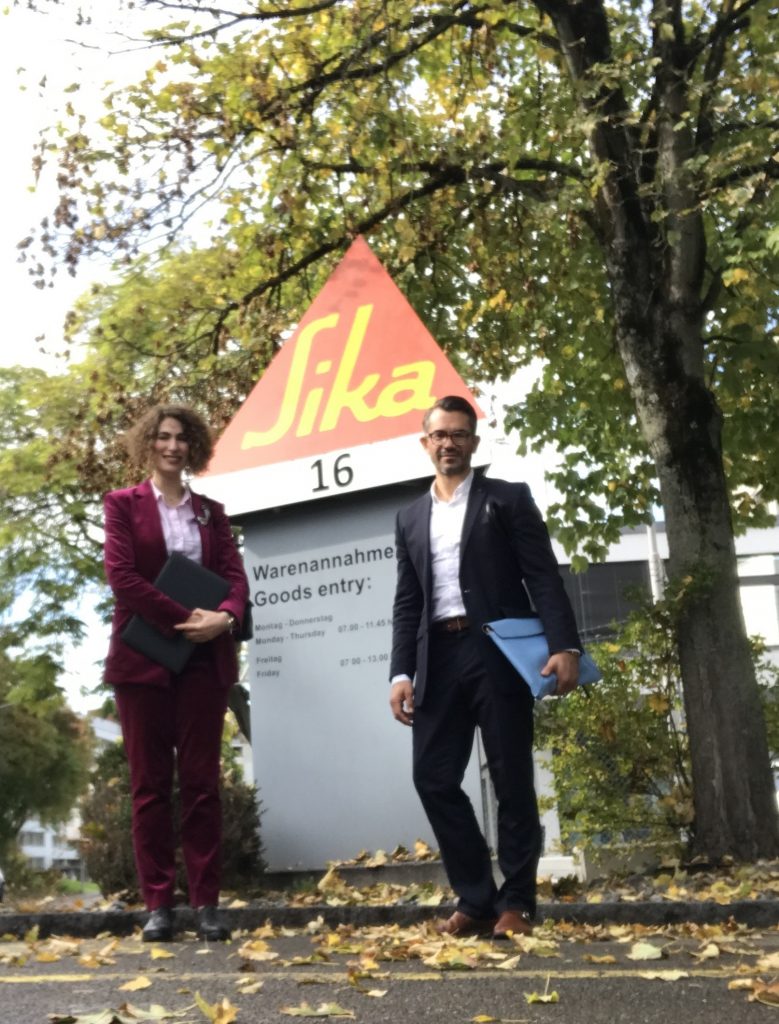Here you will find news relevant to the activities of the initiative including webinars, talks, consulting projects, publications, participation in conferences and meetings mostly relevant to resilience of critical infrastructure with emphasis on transport and energy assets and their intra/interdependencies, views on the UNs Sustainable Development Goals and use of digital and emerging technologies in infrastructure risk-based management
23
Jan 20
New paper in the Science of The Total Environment
Happy to see our new paper published in the Science of The Total Environment available online here ! In this paper we have developed a novel and detailed framework for the resilience assessment of critical infrastructure exposed to a multiple-hazard environment, which is applied to a case study of a transport asset.
This is a collaborative effort between the University of Surrey: Sotirios Argyroudis, Stergios Mitoulis; University of Padova: Lorenzo Hofer, Mariano Angelo Zanini; Strathclyde University: Enrico Tubaldi, and Lehigh University: Prof Dan M Frangopol.
The framework classifies multiple hazard sequences considering their nature and impacts, and accounts for (i) the robustness of the assets to hazard actions, based on realistic fragility functions for individual and multiple hazards, and (ii) the rapidity of the recovery, based on realistic reinstatement and restoration models after individual and multiple hazard events. It provides useful insights for the resilience-based design and management of infrastructure throughout their lifetime, leading to cost savings and improved services!

22
Jan 20
Brainstorming event: improving resilience in the utilities sector
First event on resilience for 2020: Resilience First’s briefing, in partnership with Resilience Shift funded by Lloyd’s Register Foundation, on “Lessons learned: improving resilience in the utilities sector“, hosted by ARUP London. A very interesting brainstorming with representatives from electric power, water and transport networks. Utilities and infrastructure sectors must bring academia, business, communities and stakeholders together in order to build and enhance resilience. The infrastructuresilience group was there!
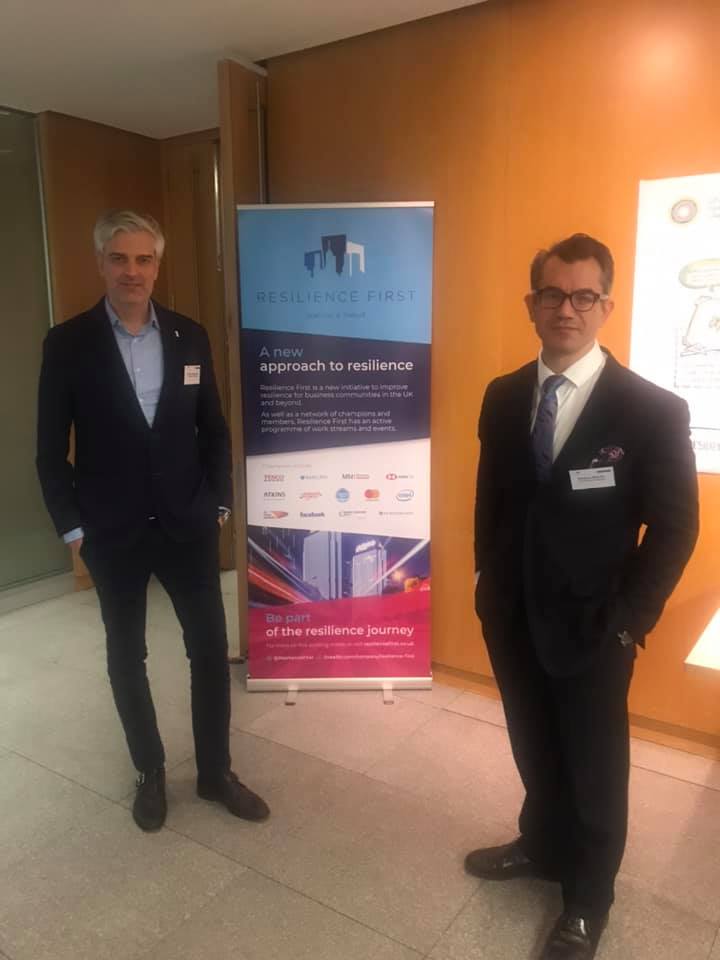
15
Jan 20
Successful Innovate UK research grant
We just won a research grant from Innovate UK and this will open-up a new collaboration with Prof Mike G Winter, who is the CEO of the SME Winter Associates Limited. The title of the project is: Novel risk analysis tools for transport infrastructure exposed to geohazards, which is a continuation and expansion of the TRANSRISK project.
The objective of this project is to deliver for the first time in the international risk assessment procedures, a practical tool for performing risk analyses for transport infrastructure (highways, railways) exposed to geo-hazards, including debris flows, rockfalls and avalanches.

14
Jan 20
Inspection of the landmark Polyfytos Lake Bridge of Servia, Greece
Inspection of the landmark Polyfytos Lake Bridge of Servia
the 44 year – old and 1372 m – long bridge that connects the cities of Kozani & Larisa – Athens national road network
Introduction
The Lake Polyphytos Bridge or the Servia / Neraida High Bridge is the second longest bridge in Greece, with a length of 1,372 m designed by XEKTE SA and Prof Riccardo Morandi. Construction began in 1972 along with the artificial lake and was completed in 1975. The bridge has similarities* with the structural system of the Ponte Morandi (Polcevera Viaduct) that collapsed on 14 August 2018 in Genova.
The involvement of the infrastructuResilience group
After invitation from the regional Governor of Western Macedonia – Greece, a visual inspection of the landmark Lake Polyphytos Bridge (Greek: Γέφυρα της λίμνης του Πολυφύτου) at Servia, Kozani had been conducted with the Governor of Western Macedonia and his consultants in early January 2020. The #infrastructuResilience of the university of Surrey was there to offer consultation and opinion on the significance of what was told to be a vertical displacement of the deck, mainly along the part of the bridge that was constructed by the balanced cantilever method. The visual inspection revealed large vertical displacements of the balanced cantilever spans of the bridge, and thus urgent preventive measures were considered to be appropriate and taken at this stage. The measures are aiming at mitigating the risk of failure of the landmark and safeguarding the safety of end-users and citizens. The urgent measures are twofold: 1) reduction of maximum vehicle load and maximum speed and 2) connection of the Gerber simply support 40 m-long spans with the 30 m long cantilevers of the bridge. The first measure aims at reducing the load and the second will reduce the risk of having the Gerber beams unseated. However, the reduction in the risk is very small as the main issue seems to be the vertical deflection of the cantilever downward, and this is the main conclusion of the inspection, whilst the reduction of the maximum vehicle load and speed seems to represent a very small portion of the total load of the deck. The photographs below show left: a view of the bridge (from Kozani to Servia), middle: the visual inspection, right: the problem as confirmed on site.

In continuation to our involvement with the inspection of the High Bridge of Servia (Polyfytos Lake Bridge), Stergios spoke to the national tv channels ERT1 and ERT3 (@ time 1h35min) analysing “what’s next” for this landmark bridge of high importance and how this affects the resilience of the network, the region and beyond.
Our involvement with the inspection of the bridge has been covered extensively by local and international media.
Press releases and reports:
tovima.gr kathimerini.gr ethnos.gr ert.gr
zougla.gr makthes.gr msn.com greekcitytimes (en)
eleftherostypos.gr neoskosmos.com (Australia)
* The similarity is the use of Gerber simply supported spans on cantilevers. Also, the understanding is now that the preliminary interview, on 15 August 2018, one day after the collapse of the bridge (see Stergios’s BBC interview here) has provided a relatively accurate comment: “…some environmental factors may have caused this bridge to deteriorate early… rust can be seen at the top of the tendons” is in accordance with the detailed research published 16 months later by Calvi et al. (2019): “The loss of a stay seems to be the final cause of collapse…The possible initial cause of the collapse may thus be related to fatigue problems in the tendons near the tip of the antenna, or by deterioration of the connection between stay and transverse link.” The latter raises concerns with regard to the design of the system of protection of the tendons adopted by professor Morandi.
13
Jan 20
Polyfytos Lake Bridge of Servia in the media
In continuation to Stergios involvement with the High Bridge of Servia (Polyfytos Lake Bridge), Stergios will be talking to the national tv channels ERT1 (14 Jan, after 7am-GR time) and ERT3 (14 Jan, after 11am-GR time) analysing “what’s next” for this landmark bridge of high importance and how this affects the resilience of the network, the region and beyond.
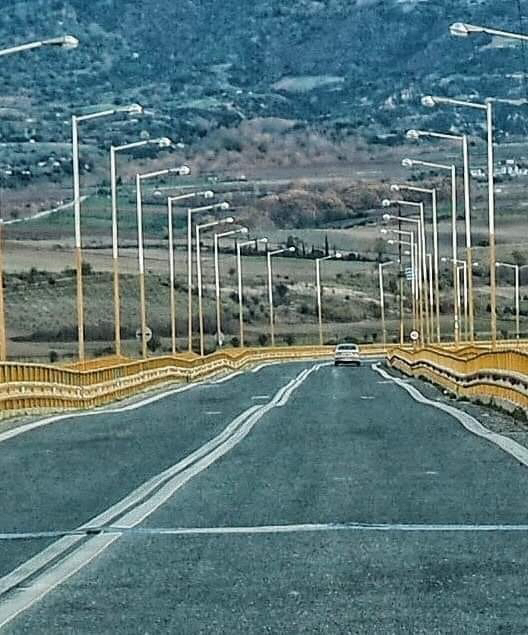
18
Dec 19
PhD examination at Imperial College
Stergios participated today in the examination of a PhD dissertation at Imperial College, on the design of externally prestressed timber bridges. Very interesting topic and impressive work. Thank you Christian Málaga-Chuquitaype for the invitation.
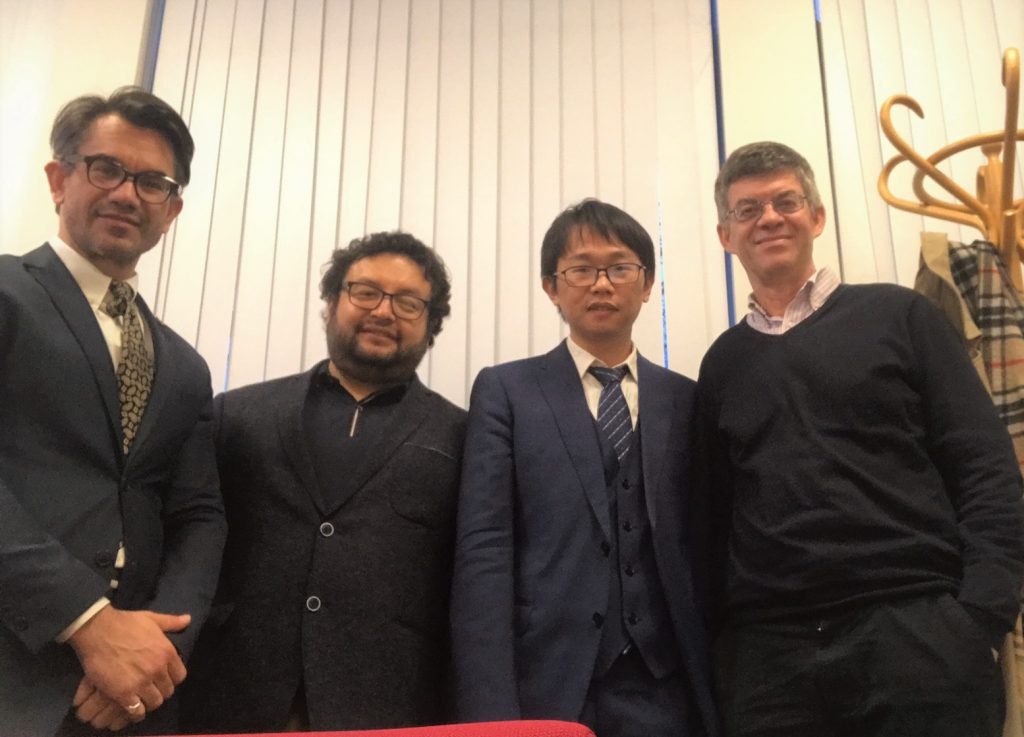
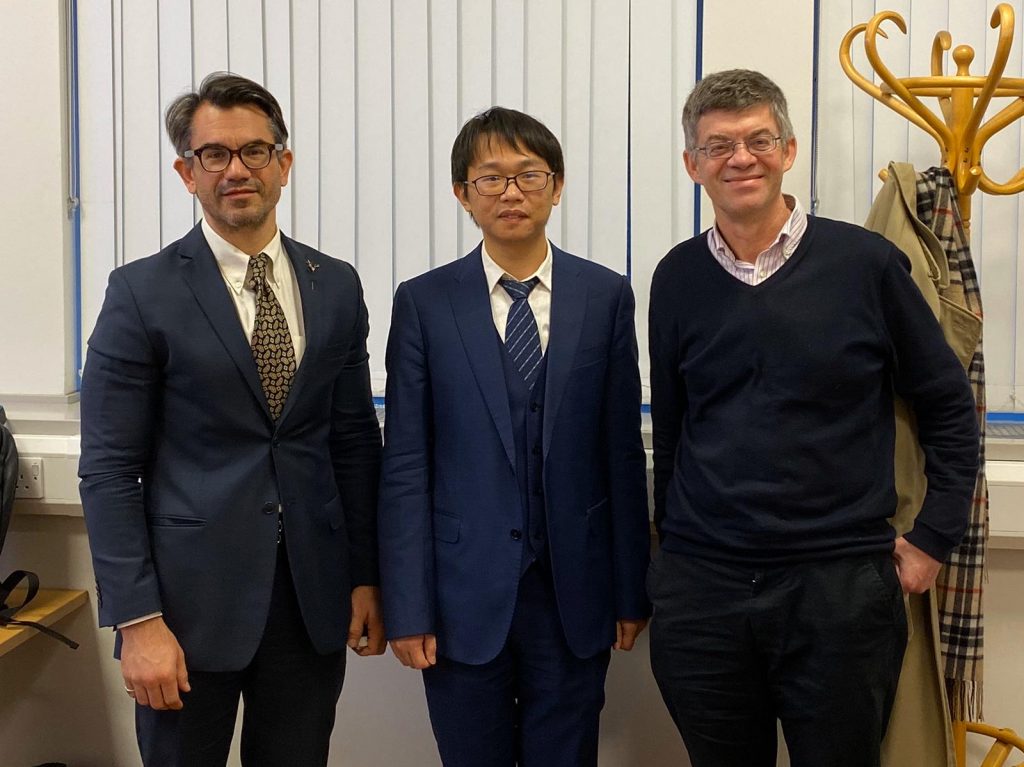
4
Dec 19
Meeting with Highways England: “University research – highway structures – hydraulic actions & extreme weather events”
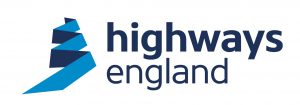
21
Oct 19
Lecture on Risk and Resilience of Bridges and Networks-21/10/2019
Stergios was invited by Prof E Chatzi and delivered a lecture on “Risk and Resilience of Bridges and Networks” at ETH Zurich-Institute of Structural Engineering, followed by interesting discussions and exchange of ideas on resilience assessment challenges!
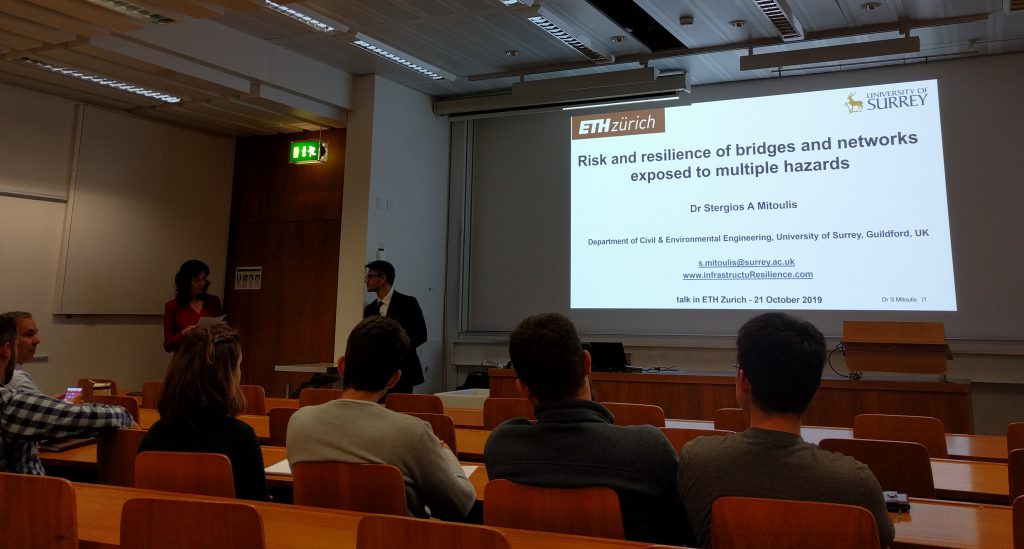
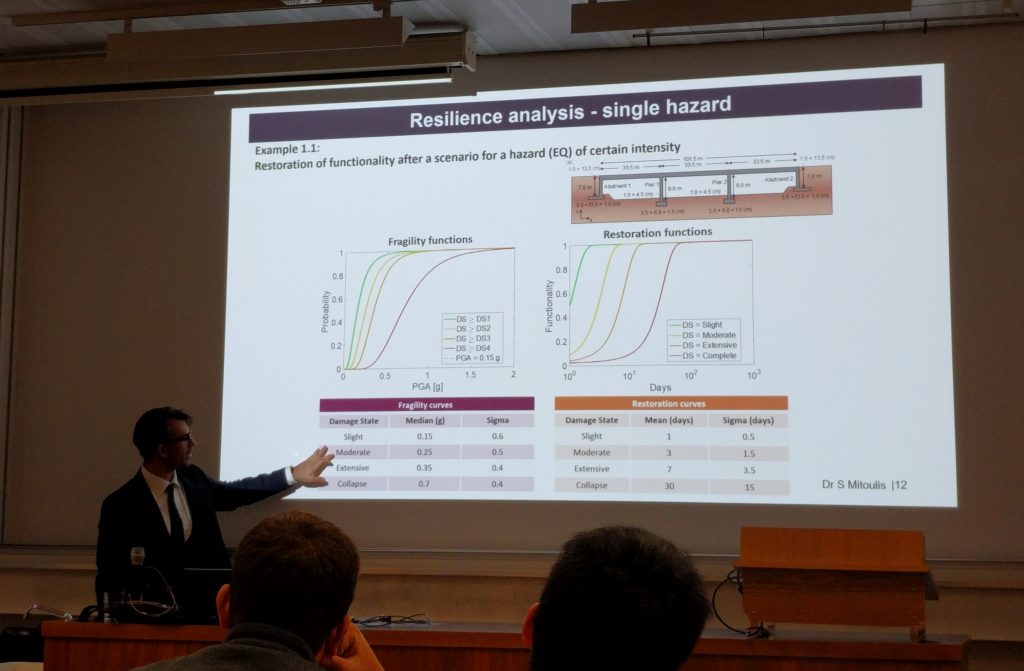
18
Oct 19
Meeting with industrial partner SIKA AG
Stergios and Dimitra had a fruitful meeting with Dr Annika Baier and Dr Fabien Choffat in the headquarters of SIKA AG in Zurich. The future trends of bond technologies for FRP measures were discussed with the industrial partner of Briface H2020-MSCA-IF project.
